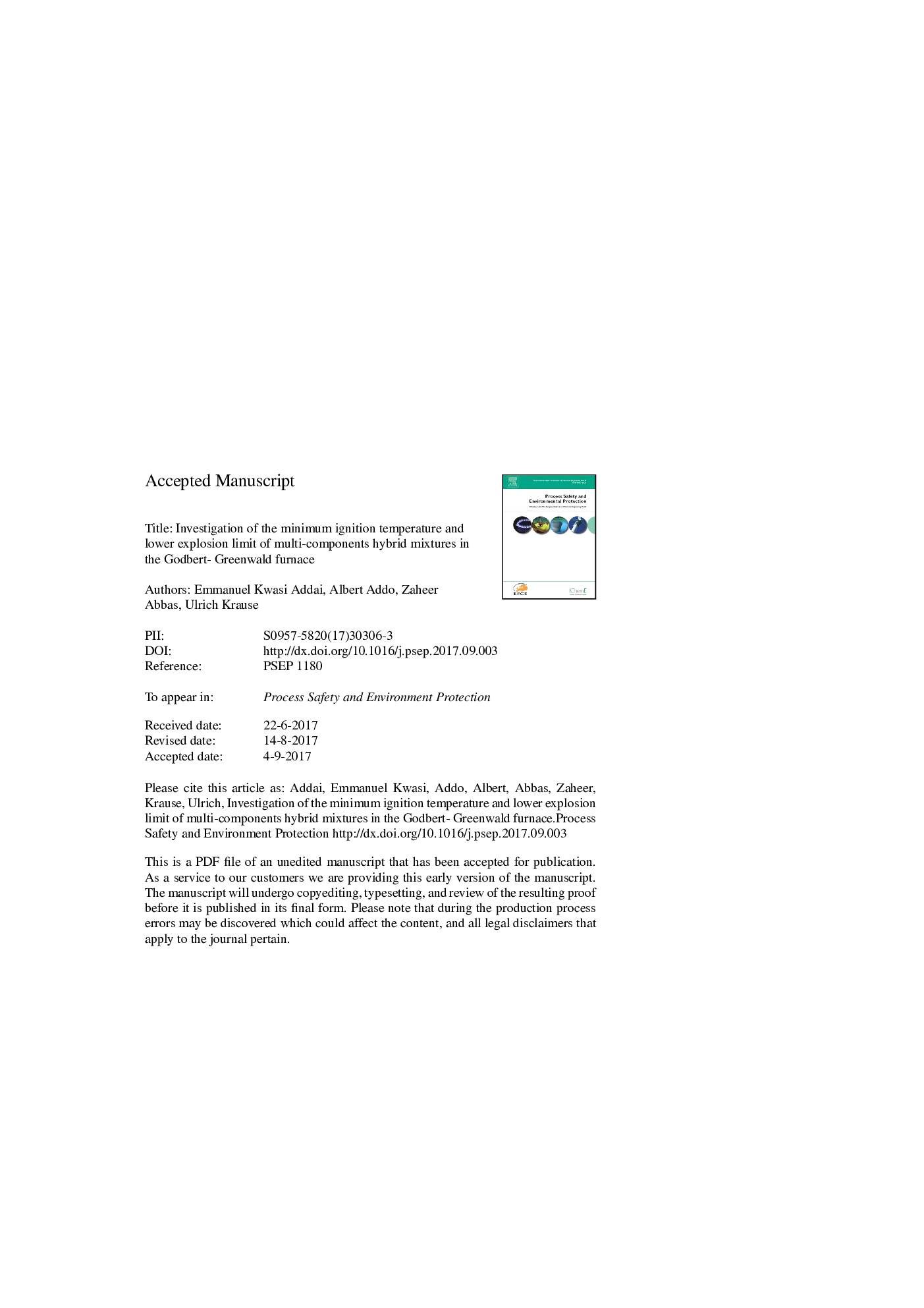| Article ID | Journal | Published Year | Pages | File Type |
|---|---|---|---|---|
| 4980705 | Process Safety and Environmental Protection | 2017 | 18 Pages |
Abstract
Explosion hazards involving mixtures of different states of aggregation continue to occur in facilities where dusts, gases or solvents are handled or processed. In order to prevent or mitigate the risk associated with these mixtures, more knowledge of the explosion behavior of hybrid mixtures is required. An experimental investigation of the minimum ignition temperature (MIT) and the lower explosion limit/minimum explosion concentration (LEL/MEC) of three component hybrid mixtures of combustible dusts, gases and vapors in air were performed in a modified Godbert-Greenwald (GG) furnace. The study comprised three dusts, two gases and two solvents vapors. For the dusts alone, the experimental protocol was in accordance with the European standard EN 50281-2-1, whereas for the gases, solvent vapors and mixtures of these with dusts, this protocol had to be modified slightly. It was found that the MITs of the gases and solvent vapors decreased significantly when a combustible dust at a concentration below the MEC of the dust alone, was added. A significant decrease in the MIT was also found if the gas/vapor atmosphere was mixed with a dispersed combustible dust that could not be ignited alone at the given temperature in the GG furnace. For example, the MIT of methane decrease from 600 °C to 585 °C when a small amount of starch was added. This hybrid MIT further decreased to 490 °C when a non-explosible third component, ethanol, was added. It was also found that a hybrid cloud of a combustible dust at a concentration less than the MEC and a combustible gas at a concentration less than the LEL could be ignited in the GG furnace. For example, the MEC of starch decreased from about 145 g/m3 to 40 g/m3 when methane at a concentration below the LEL was added. This explosible concentration of starch- methane mixture further decreased to 25 g/m3 when a small fraction of a third component, hexane, was added.
Related Topics
Physical Sciences and Engineering
Chemical Engineering
Chemical Health and Safety
Authors
Emmanuel Kwasi Addai, Albert Addo, Zaheer Abbas, Ulrich Krause,
